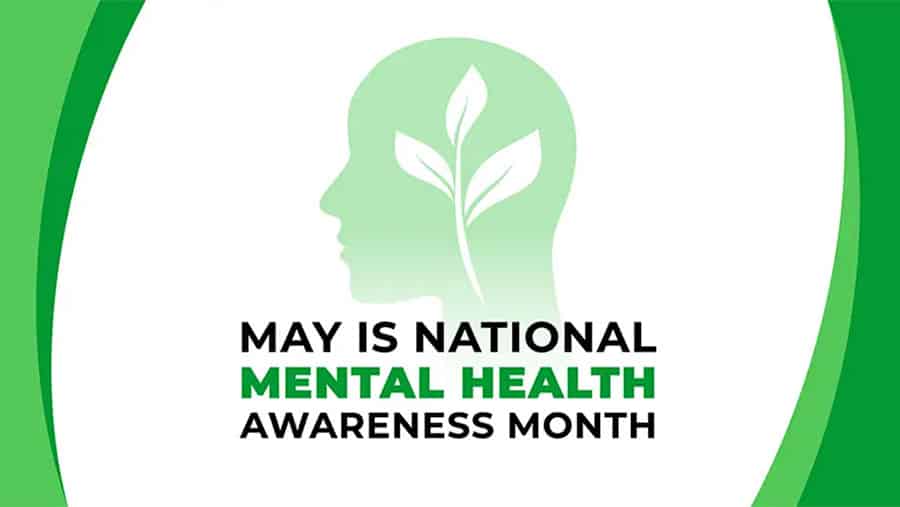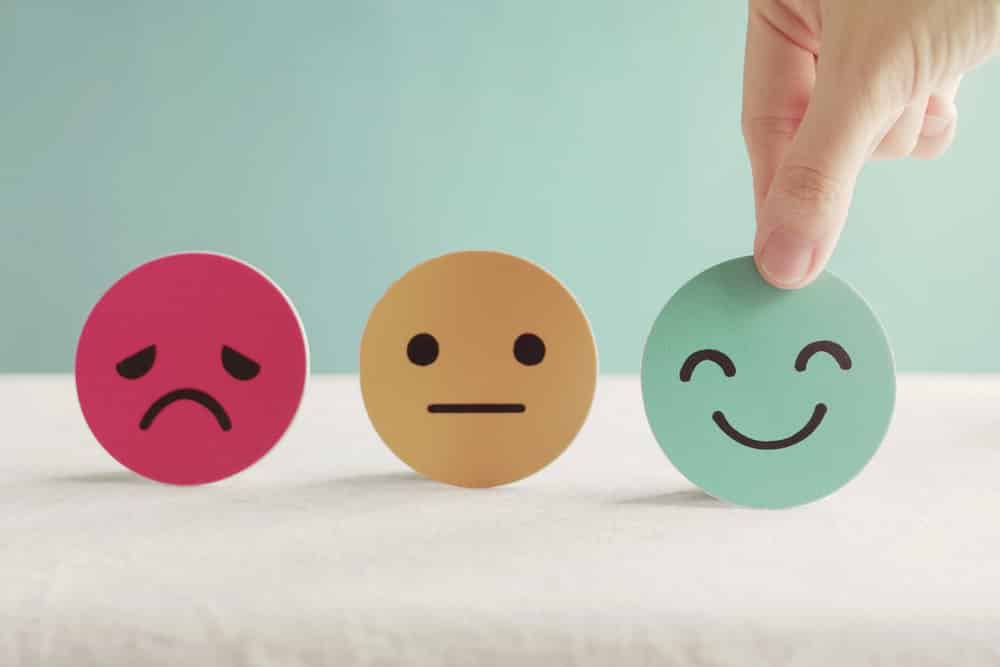Mental Health Awareness Month 2021: Ideas on How to Celebrate & Other Information
May 2021 is Mental Health Awareness month, and a time to raise awareness and take action to beat the stigmatization of mental health conditions. Millions of people in the United States survive with a mental illness – 51.5 million in 2019, to be exact.1 But how many truly “live” with their mental illness, we can’t currently measure.
Yet, the general public has stigmatized mental disorders for as long as they’ve existed. Mental Health Awareness Month focuses on raising awareness regarding mental illnesses as true chronic diseases – ones that often cannot be cured, only treated, and are not the sufferers’ fault – as well as destigmatizing these chronic health conditions.
If you or a loved one is struggling with a mental illness, remember that this is not your fault and you are not alone. If you are struggling with addiction in addition to your mental illness, reach out to Hotel California by the Sea for more information on how to get help for addiction and co-occurring mental health conditions, or where to find individualized mental health treatment.
Before we delve into how you can participate in Mental Health Awareness Month, let’s first talk about what mental illnesses are – and what they aren’t.

What Are Mental Illnesses?
According to the Centers for Disease Control, mental illnesses are “conditions that affect a person’s thinking, feeling, mood, or behavior, such as depression, anxiety, bipolar disorder, or schizophrenia.” Mental illnesses are chronic conditions that may involve relapse, and are typically unable to be “cured” in the traditional sense of medicine. The direct cause of mental illness is still unknown, but contributing factors such as genetics and other co-occurring mental health conditions may play a role in the development of mental disorders.
Mental illnesses are NOT the fault of the sufferer, they cannot be successfully treated with one self-help book or one lecture, and they do not discriminate based on race, religion, culture, ethnicity, gender, or sexual orientation.
While some mental illnesses may last for a limited period of time, or only emerge in periods of immense stress or illness, others are chronic and long lasting. Some people may experience periodic relief from their mental illness, teetering in and out of “relapse” in mental symptoms, while others are unable to climb out of the depths of mental illness and maintain remission for any period of time.
Additionally, people can experience multiple mental health conditions simultaneously, such as depression and anxiety. There are more than 200 types of mental illnesses, but some of the most common types include:
- Anxiety disorders (including generalized anxiety disorder, panic disorder, and more).
- Mood disorders (such as bipolar disorder or depression).
- Eating disorders (including anorexia, binge eating disorder, buliimia, or EDNOS).
- Personality disorders (such as borderline personality disorder or narcissistic personality disorder).
- Substance use disorders (sometimes referred to as addiction to alcohol or other drugs).
- Psychotic disorders (like schizophrenia).
Remember that, even if a mental illness is not clinically diagnosed “severe”, it can still affect someone negatively in their daily life.
Ideas on How to Celebrate Mental Health Awareness Month
If you’re looking for ways to help support the movement of Mental Health Awareness Month in May of 2021, we’ve gathered some ideas.
- Take care of yourself and prioritize your own mental health. If you’re looking for possibly one of the best ways to support a movement to raise awareness and prioritize mental health, start with yourself! You may wish to start making sure you get enough sleep each night (which can positively contribute to mental health), pay attention to your diet and nutrition, exercising, and practicing mindfulness. There are plenty of other ways to take care of your mental health, but these are a few great starting points.
- Educate yourself on mental illnesses. Another incredible way to increase awareness of mental illnesses is to increase your OWN mental health knowledge. Visit websites like the Centers for Disease Control or the National Institute on Mental Health to learn authoritative information on mental health conditions and their effects on individuals and society as a whole.
- Donate to mental health-related causes or organizations. If you do not have the time or money to volunteer, or want to do more than educate yourself on mental illnesses, donate to a cause of your choice that works to support continued education, research, and stigmatization of mental health issues.
- Turn to social media and SHARE! If you’ve read about mental illnesses or seen some staggering graphic illustrations on the causes and effects of mental health conditions, or simply awareness-raising content, share it! We live in a world of instantaneous information sharing, so use your ability to share information on a platform where others will see for the purpose of educating your audience on mental illnesses.
- Research ways to help a friend who is struggling with a mental illness. If you know that your loved one is struggling with a mental illness, do research on how to help someone struggling with a mental illness.
- Submit your story to the National Alliance on Mental Illness. By sharing your story of living, recovering from, or coping with a mental illness, you’ll spread awareness, perhaps find more healing, and remind others that they are not alone in their struggles with mental health conditions.
- Participate in conversation about mental illnesses, and set the records straight. Once you’re adequately educated on mental health conditions, participate in small and larger conversations about them. If you hear stigmatizing language, or victim-blaming language, stand up for worldwide sufferers by setting the record straight regarding the facts of mental illnesses.
Mental Health Conditions & Substance Use Disorders
For mental health awareness month, Hotel California by the Sea also wants to take a look at how mental health conditions can be a risk factor for the development of substance use disorders, and how mental health conditions can have grave effects on their sufferers (even when they’re “mild”).
Around 10.2 million people in the United States have both a mental health condition alongside a substance use disorder.2 Sometimes, a substance use disorder can contribute to the development of a mental health condition, while sometimes mental illnesses can pose as risk factors for the later development of addiction.
Understanding that there is a complex relationship between certain mental illnesses and substance disorders can help you destigmatize each of these mental illnesses and realize that they can be extremely interconnected. Co-occurring disorders can prove extremely tricky to treat, but one of the best ways to treat addiction and co-occurring disorders is to do so simultaneously.
To learn more about treating mental health conditions along with substance use disorders, refer to Hotel California by the Sea’s co-occurring disorder treatment page. We treat men, women, and young adults currently struggling with addiction and co-occurring mental health conditions. By utilizing the most modern, effective, and evidence-based therapeutic modalities, Hotel California by the Sea aides in the recovery of thousands of patients every year across the nation.
Reach out to Hotel California by the Sea
We specialize in treating addiction and other co-occurring disorders, such as PTSD. Our Admissions specialists are available to walk you through the best options for treating your addiction.
Interesting Mental Illness Facts & Statistics
- Mental illness (depression, in particular), can increase the risk for certain physical health issues, such as stroke, diabetes, and heart disease.3
- Mental illness affects nearly 20% of children. 1 in 5 children have a seriously debilitating mental health disorder.4
- About 50% of all chronic mental health conditions begin by age 14, with many others developing later on.5
In 2015, around 8 million people had both Any Mental Illness (AMI) and a substance use disorder, but only about half of these people received treatment for their mental illness OR their substance use disorder.6

Check Your Insurance Coverage for FREE
Find out if your insurance covers addiction treatment in minutes. We accept most insurance!
Sources:
- https://www.nimh.nih.gov/health/statistics/mental-illness.shtml#:~:text=In%202019%2C%20there%20were%20an,%25)
- https://www.nimh.nih.gov/health/publications/chronic-illness-mental-health/index.shtml
- https://www.nimh.nih.gov/health/statistics/mental-illness.shtml
- https://www.samhsa.gov/data/sites/default/files/NSDUH-FFR1-2015/NSDUH-FFR1-2015/NSDUH-FFR1-2015.pdf
